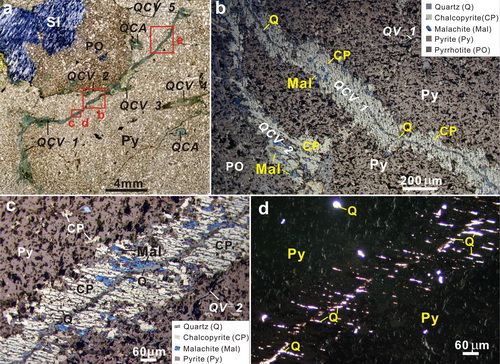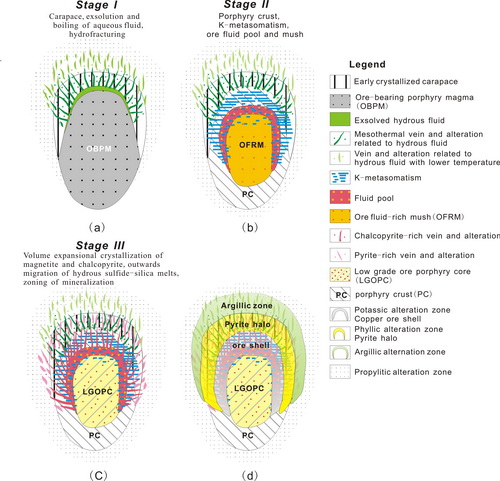Zoning of mineralization in hypogene porphyry copper deposits: Insight from comb microfractures within quartz–chalcopyrite veins in the Hongshan porphyry Cu depositUpdate time:10 23, 2012
Vice Professor XU Xingwang and his team propose a new, modified “orthomagmatic” genetic model for mineralization zoning in hypogene porphyry copper deposits. This new model is based on the features and formation mechanism of comb microfractures in quartz-chalcopyrite veins within pyrite vein from the Hongshan porphyry copper deposit in Zhongdian county, western Yunnan Province, SW-China. The main evidence for this model is volume expansion related to crystallization of chalcopyrite, magnetite and K-metasomatism in the deposit. They suggest that zoning of mineralization in hypogene porphyry copper deposits is mainly related to hydrofracturing, migration and distribution of ore-forming fluids, including (1) the enclosure and formation of a mush core, (2) concentration of ore-forming fluids in the orthoclase shell, (3) K-metasomatism and pressure building, (4) hydrofracturing and migration of ore-forming fluids, and (5) prior crystallization of magnetite and chalcopyrite that will expel residual fluids upwards and outwards due to the change in volumetric pressure.
Fig.1. (a) Scanning image, (b and c) reflecting microscopic images, (d) polarized microscopic images. (Image by XU)
Fig.2. Genetic model for zonal mineralization of hypogene porphyry copper deposits. (Image by XU) Xu et al. Zoning of mineralization in hypogene porphyry copper deposits: Insight from comb microfractures within quartz–chalcopyrite veins in the Hongshan porphyry Cu deposit, western Yunnan, SW China. Journal of Asian Earth Sciences. 2012, 56:218–228 (Download Here)
|
Contact
Related Articles
Reference
|
-
SIMSSecondary Ion Mass Spectrometer Laboratory
-
MC-ICPMSMultiple-collector ICPMS Laboratory
-
EM & TEMElectron Microprobe and Transmission Electron Microscope Laboratory
-
SISolid Isotope Laboratory
-
StIStable Isotope Laboratory
-
RMPARock-Mineral Preparation and Analysis
-
AAH40Ar/39Ar & (U-Th)/He Laboratory
-
EMLElectron Microscopy Laboratory
-
USCLUranium Series Chronology Laboratory
-
SASeismic Array Laboratory
-
SEELaboratory of Space Environment Exploration Laboratory
-
PGPaleomagnetism and Geochronology Laboratory
-
BioMNSFrance-China Bio-mineralization and Nano-structure Laboratory

 Print
Print Close
Close

